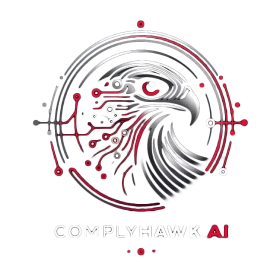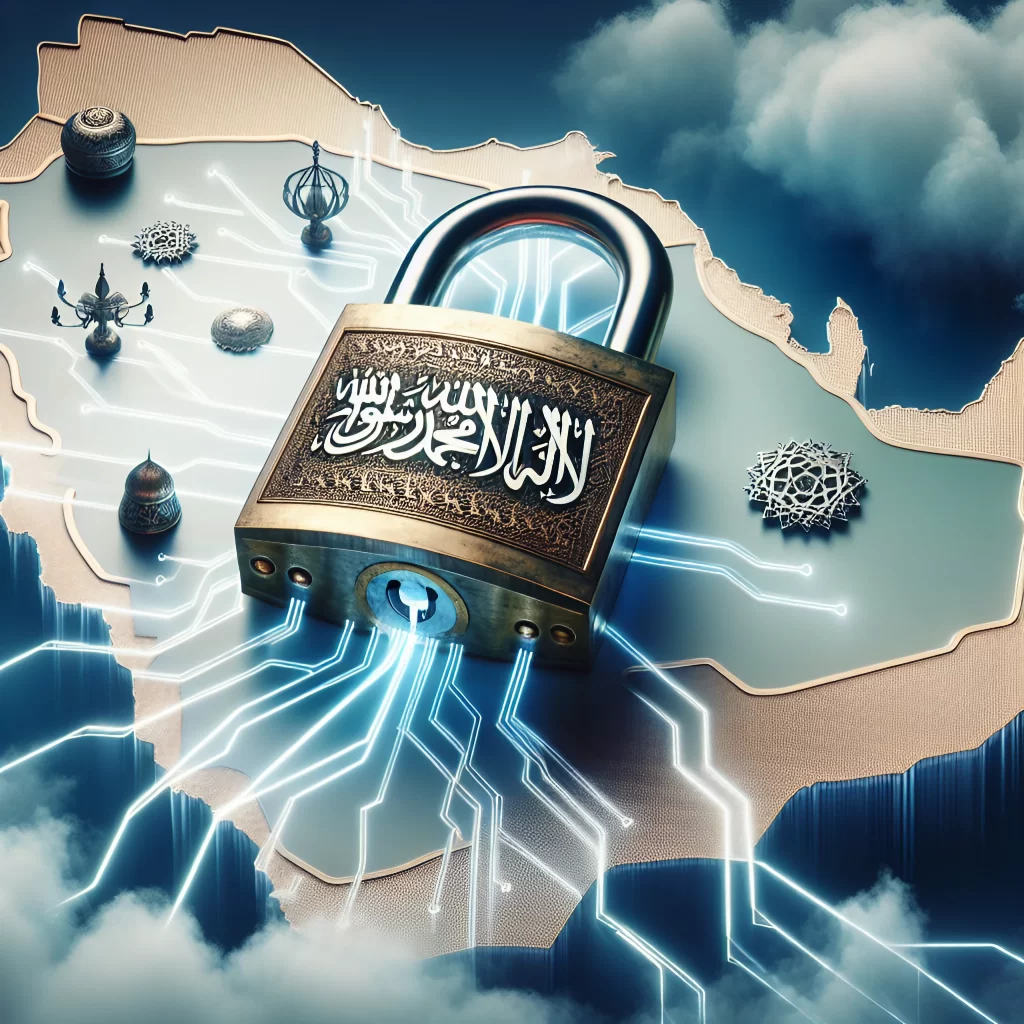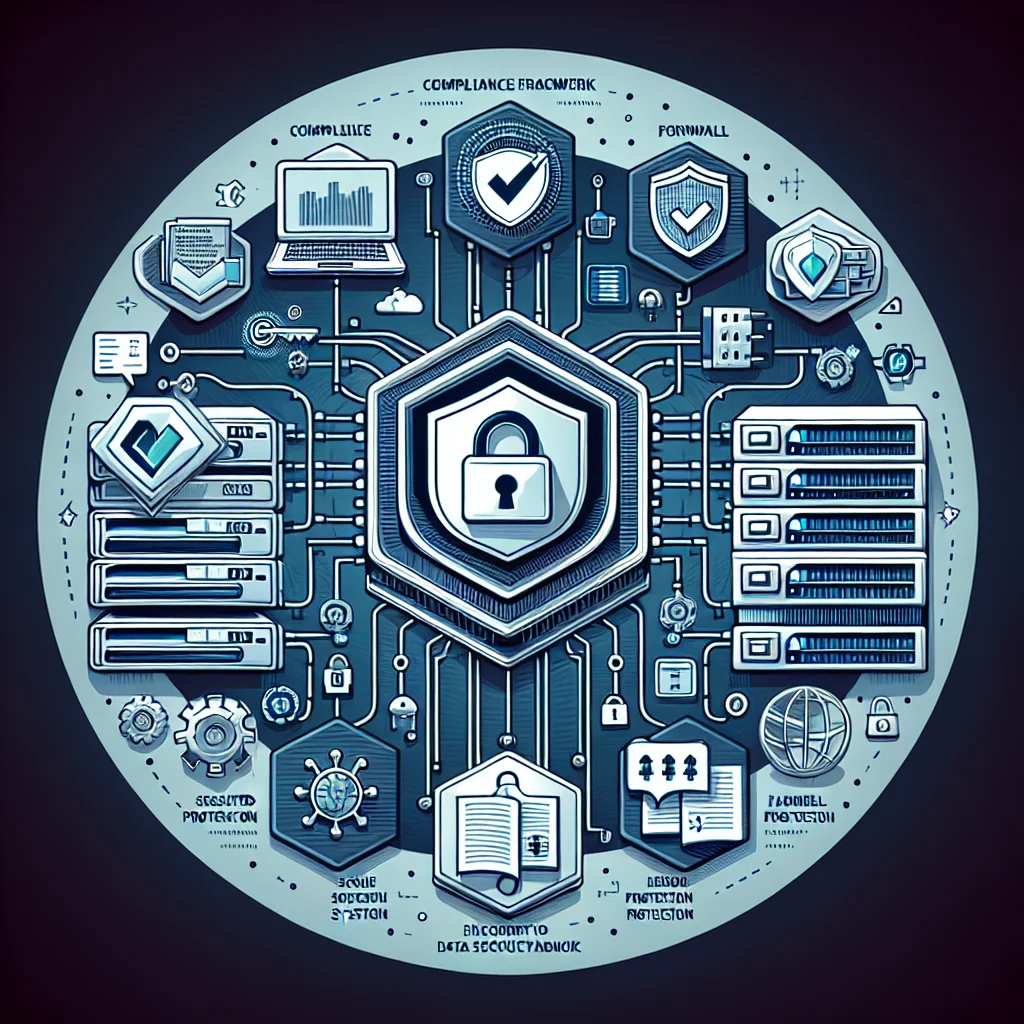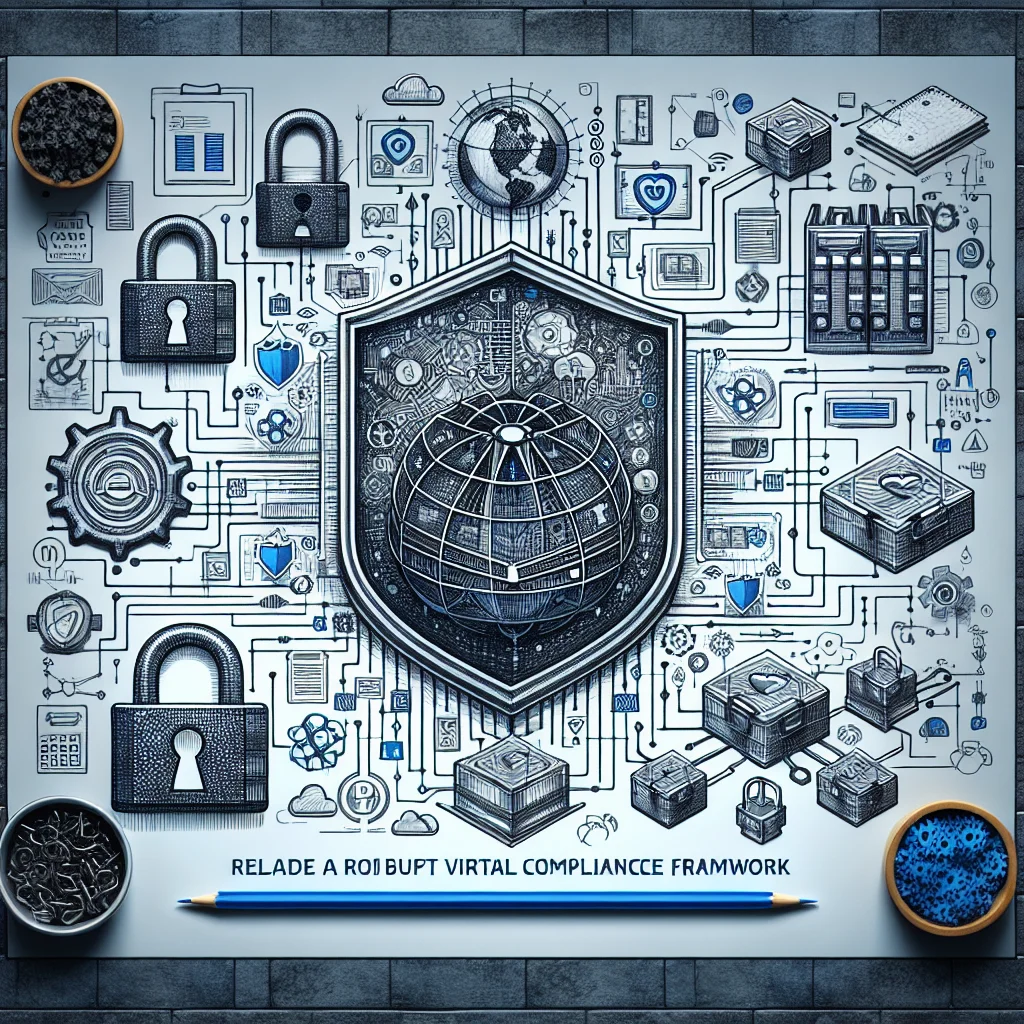Introduction
In the dynamic landscape of cloud security, the Cloud Security Alliance (CSA) Security, Trust, Assurance, and Risk (STAR) certification stands as a beacon of excellence. For Chief Information Security Officers (CISOs), especially those operating in the Middle East, understanding and implementing CSA STAR is not just about compliance—it’s about fortifying trust and ensuring robust security measures.
This thought leadership piece aims to provide a comprehensive guide to CSA STAR, answering frequently asked questions, offering insights into implementation, and highlighting the unique challenges faced by CISOs. Additionally, we’ll explore how ComplyHawk can streamline compliance efforts through automation.
Understanding CSA STAR
CSA STAR is a rigorous certification that assesses the security posture of cloud service providers. It’s built on the foundation of the CSA’s Cloud Controls Matrix (CCM) and covers various aspects of cloud security, including data protection, risk management, and compliance.
(Source: CSA)
Where to Start with CSA STAR?
Before embarking on the CSA STAR certification journey, it’s crucial to understand the basics:
- Familiarize Yourself with CSA STAR:
- Read the CSA’s official documentation.
- Understand the requirements and controls outlined in the Cloud Controls Matrix (CCM).
- Assess Your Current Security Posture:
- Conduct a thorough internal audit to identify gaps.
- Align your existing security measures with CSA STAR requirements.
- Engage Stakeholders:
- Communicate the importance of CSA STAR to your organization.
- Secure buy-in from senior management and relevant departments.
Implementing CSA STAR
Implementation involves several key steps:
- Gap Analysis:
- Compare your current security practices with CSA STAR standards.
- Identify areas needing improvement.
- Develop a Roadmap:
- Create a detailed plan outlining the steps to achieve compliance.
- Include timelines, resources, and responsibilities.
- Implement Controls:
- Apply the necessary security controls based on the CSA CCM.
- Ensure documentation and evidence for each control.
- Conduct Internal Audits:
- Regularly review and assess the implementation of controls.
- Address any identified issues promptly.
- Engage a Third-Party Auditor:
- Hire a certified auditor to conduct an official assessment.
- Prepare for the audit by ensuring all documentation and controls are in place.
FAQs about CSA STAR
1. What is CSA STAR?
CSA STAR is a certification program that evaluates the security practices of cloud service providers based on the CSA’s Cloud Controls Matrix.
2. What are the levels of CSA STAR certification?
There are three levels:
- Self-Assessment
- Third-Party Attestation
- Continuous Monitoring
3. How does CSA STAR differ from other certifications like ISO27001 and PCI-DSS?
CSA STAR specifically focuses on cloud security, while ISO27001 covers information security management systems broadly. PCI-DSS is centered on payment card data security. However, there are overlapping controls among these standards.
4. What is the Cloud Controls Matrix (CCM)?
The CCM is a set of security controls tailored to cloud environments, forming the basis of CSA STAR.
5. How do I start the CSA STAR certification process?
Begin with a self-assessment using the CCM, then gradually work towards third-party attestation.
6. How long does it take to achieve CSA STAR certification?
The timeline varies based on your organization’s current security posture and resources but typically ranges from six months to a year.
7. What are the costs associated with CSA STAR certification?
Costs include internal resource allocation, third-party auditing fees, and potential investments in new security measures.
8. Can CSA STAR certification be integrated with ISO27001?
Yes, many controls overlap, making it feasible to align both certifications.
9. How often is CSA STAR certification renewed?
It requires annual assessments to maintain certification status.
10. What are the common challenges in implementing CSA STAR?
Challenges include resource allocation, understanding complex controls, and maintaining continuous compliance.
11. How does CSA STAR benefit my organization?
It enhances trust with customers, demonstrates commitment to security, and improves overall risk management.
12. What role does documentation play in CSA STAR certification?
Documentation is crucial for demonstrating compliance with each control.
13. How can I prepare for a CSA STAR audit?
Conduct internal audits, ensure all documentation is up-to-date, and engage stakeholders in the preparation process.
14. What is the role of a third-party auditor in CSA STAR certification?
The auditor assesses your compliance with CSA STAR controls and provides an official certification if you meet the requirements.
15. How does CSA STAR address data protection?
CSA STAR includes specific controls for data protection, ensuring that cloud service providers implement robust measures.
16. What is continuous monitoring in CSA STAR?
Continuous monitoring involves regular assessments to ensure ongoing compliance with CSA STAR controls.
17. Can CSA STAR certification be transferred between cloud providers?
No, each provider must undergo their own certification process.
18. How does CSA STAR certification impact customer trust?
It demonstrates a commitment to security, thereby enhancing customer trust and confidence.
19. What resources are available to help with CSA STAR implementation?
The CSA offers various resources, including the CCM, best practices, and guidance documents.
20. How can ComplyHawk assist with CSA STAR compliance?
ComplyHawk offers automated solutions to streamline documentation, conduct internal audits, and manage compliance tasks efficiently.
Common Controls Between CSA STAR, ISO27001, and PCI-DSS
Understanding the commonalities between these standards can simplify the certification process. Here are some shared controls along with specific clauses:
- Risk Management:
- All three standards emphasize the importance of risk assessment and management. (ISO 27001 Clause 6.1, NIST SP 800-53 RA-1)
- Access Control:
- Ensuring appropriate access controls is a key requirement. (ISO 27001 Clause 9.1, NIST SP 800-53 AC-1)
- Incident Management:
- Procedures for identifying and responding to security incidents are critical. (ISO 27001 Clause 16.1, NIST SP 800-53 IR-1)
- Data Protection:
- Protecting sensitive data through encryption and other measures is essential. (ISO 27001 Clause 10.1, NIST SP 800-53 SC-12)
What CSA STAR Means for CISOs in the Middle East
For Chief Information Security Officers (CISOs) in the Middle East, achieving CSA STAR certification can have a profound and lasting impact on their organizations. Here are some key benefits:
- Enhanced Reputation:
- Obtaining CSA STAR certification demonstrates a strong commitment to upholding global security standards, which can elevate an organization’s standing in the industry. This public acknowledgment of adherence to rigorous security practices not only builds credibility but also enhances the overall reputation of the organization.
- Additionally, this certification fosters trust with international customers and partners, who increasingly prioritize working with businesses that can provide evidence of robust security and compliance measures.
- Regulatory Compliance:
- In an era where data protection and privacy regulations are becoming more stringent, CSA STAR certification helps organizations meet important regional regulatory requirements. This not only ensures compliance with local laws but also positions the organization favorably in terms of governance and risk management practices.
- By aligning with these regulations, organizations can avoid potential legal issues and demonstrate due diligence in protecting sensitive information.
- Competitive Advantage:
- Achieving CSA STAR certification can significantly differentiate your organization in a competitive market. In an environment where businesses are constantly vying for clients and market share, having this certification sets your organization apart as a leader in security and compliance.
- This competitive edge can attract new clients who are seeking reliable partners, ultimately driving growth and establishing long-term relationships built on trust and security.
In summary, for CISOs in the Middle East, obtaining CSA STAR certification is not just about meeting standards; it’s about elevating the organization’s reputation, ensuring compliance, and gaining a competitive edge in a challenging landscape.
Common Challenges for CISOs Implementing CSA STAR
- Resource Constraints:
- Allocating sufficient resources for implementation can be challenging.
- Complex Controls:
- Understanding and applying complex controls requires expertise.
- Continuous Compliance:
- Maintaining compliance over time demands ongoing effort and vigilance.
Integrations with Cloud Providers and On-Premises Solutions
Integrating CSA STAR compliance processes with prominent cloud providers like AWS, Azure, and Google Cloud Platform (GCP), as well as on-premises solutions, can significantly enhance your organization’s ability to maintain security standards and streamline operations.
- AWS Integration:
- ComplyHawk can interface with AWS to automate compliance checks against CSA STAR controls, leveraging AWS CloudTrail for logging activities and Amazon GuardDuty for threat detection. These integrations facilitate continuous monitoring and provide real-time insights into security posture.
- Azure Integration:
- With Microsoft Azure, organizations can utilize Azure Security Center to assess configurations and security compliance against CSA STAR requirements. ComplyHawk enables automated notifications and reporting, helping to identify gaps and manage remediation efforts efficiently.
- Google Cloud Platform (GCP) Integration:
- The integration with GCP allows for the use of native security features like Identity and Access Management (IAM) and Data Loss Prevention (DLP), which are crucial in meeting CSA STAR data protection controls. ComplyHawk aids in collecting relevant security data and aligning it with documentation requirements.
- On-Premises Solutions:
- For organizations with on-premises infrastructure, ComplyHawk can integrate with existing security tools and practices, such as SIEM systems, to ensure consistent monitoring and reporting of compliance efforts. This includes automating the collection of logs, incident responses, and risk assessments, thereby aligning with CSA STAR controls effectively.
These integrations not only facilitate a seamless certification process but also strengthen the overall security framework of the organization by ensuring comprehensive coverage across cloud and on-prem environments.
How ComplyHawk Can Automate CSA STAR Compliance
ComplyHawk enhances the compliance process for CSA STAR through automation and tailored integrations:
- Document Requests:
- Automatically generate and manage the necessary documentation specific to CSA STAR requirements, ensuring that all evidence is up-to-date and accessible.
- Internal Audits:
- Conduct regular internal audits focused on CSA STAR standards to maintain continuous compliance, leveraging integrations with cloud providers and on-premises solutions for comprehensive oversight.
- Streamlined Tests:
- Automate testing and validation of controls relevant to CSA STAR, ensuring that both cloud and on-prem solutions align with compliance mandates efficiently and effectively.
Conclusion
Achieving CSA STAR certification is a significant milestone for any organization, symbolizing a commitment to cloud security and trust. While the path to certification may be challenging, the benefits far outweigh the effort. For CISOs, especially those in the Middle East, CSA STAR offers a pathway to enhanced reputation, regulatory compliance, and competitive advantage. Especially given the many reservations against cloud and fears about data residency.
New help in with your compliance process? Book a demo with ComplyHawk to learn more and get started on your certification journey.



